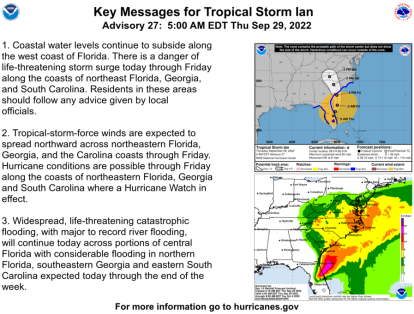'Ian' loses strength but wreaks havoc: Florida in "catastrophic" condition
Hurricane 'Ian' became a tropical storm and left more than 2.5 million citizens without power in the Sunshine State.

(Cordon Press)
Joe Biden on Thursday approved a major disaster declaration for Florida after Hurricane Ian hit the state as a tropical storm and dropped to a Category 1. The president announced federal aid to supplement state recovery efforts.
In this regard, the White House announced federal funds for those affected by Ian in Charlotte, Collier, DeSoto, Hardee, Hillsborough, Lee, Manatee, Pinellas, and Sarasota counties.
The storm is expected to bring "potentially deadly" flooding, storm surge and winds to numerous parts of Florida, Georgia and North and South Carolina. Florida Governor Ron DeSantis noted that Ian has brought "historic" levels of damage to the state and announced the beginning of rescue operations.
More than 2.6 million customers without electric power
In the aftermath of Hurricane Ian, more than 2.6 million customers are without power, supply tracker PowerOutage.us reported. The most affected region is the southwest. Lee County has more than 420,000 customers without electricity, approximately 90% of all customers. In Sarasota County, more than 225,000 customers are without supply, approximately 79%. Collier County has more than 202,000 customers without electricity, representing 77% of the county's population.
On the other hand, the weather service warns of the risk of flooding and increased winds, that will become stronger from Friday afternoon.
Ian is now expected to move inland from Florida, exit into the Atlantic Ocean and end up affecting the states of Georgia and South Carolina, according to forecasts from the National Hurricane Center, which updated its warnings as the hurricane evolved into a tropical storm.

RECOMMENDATION





















